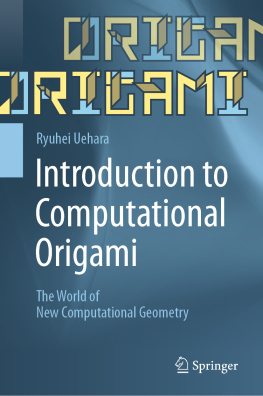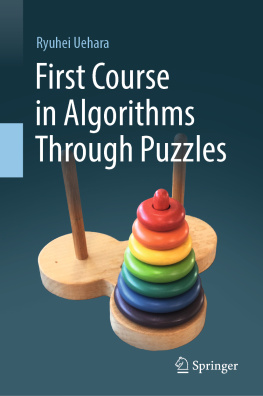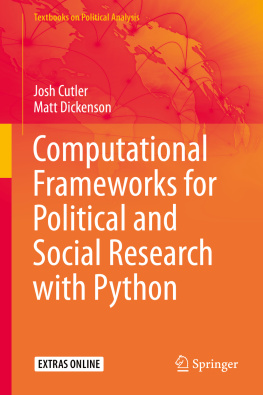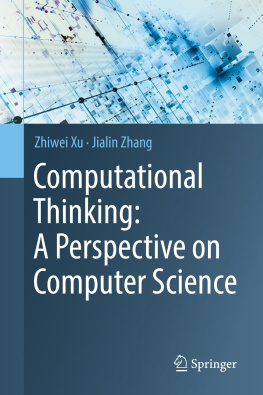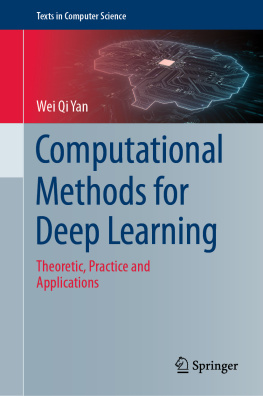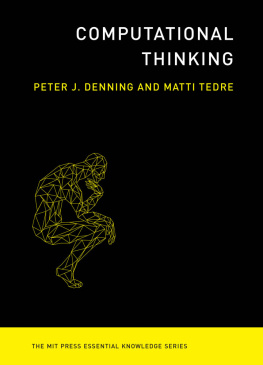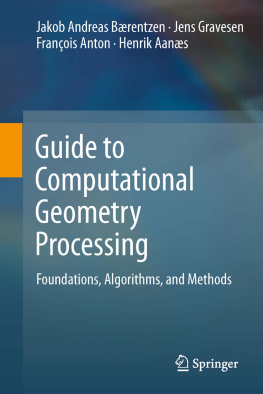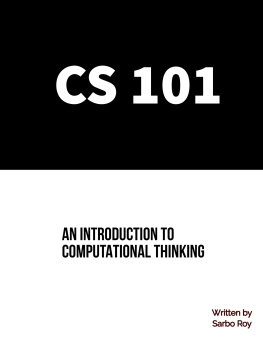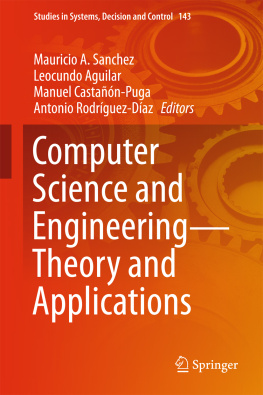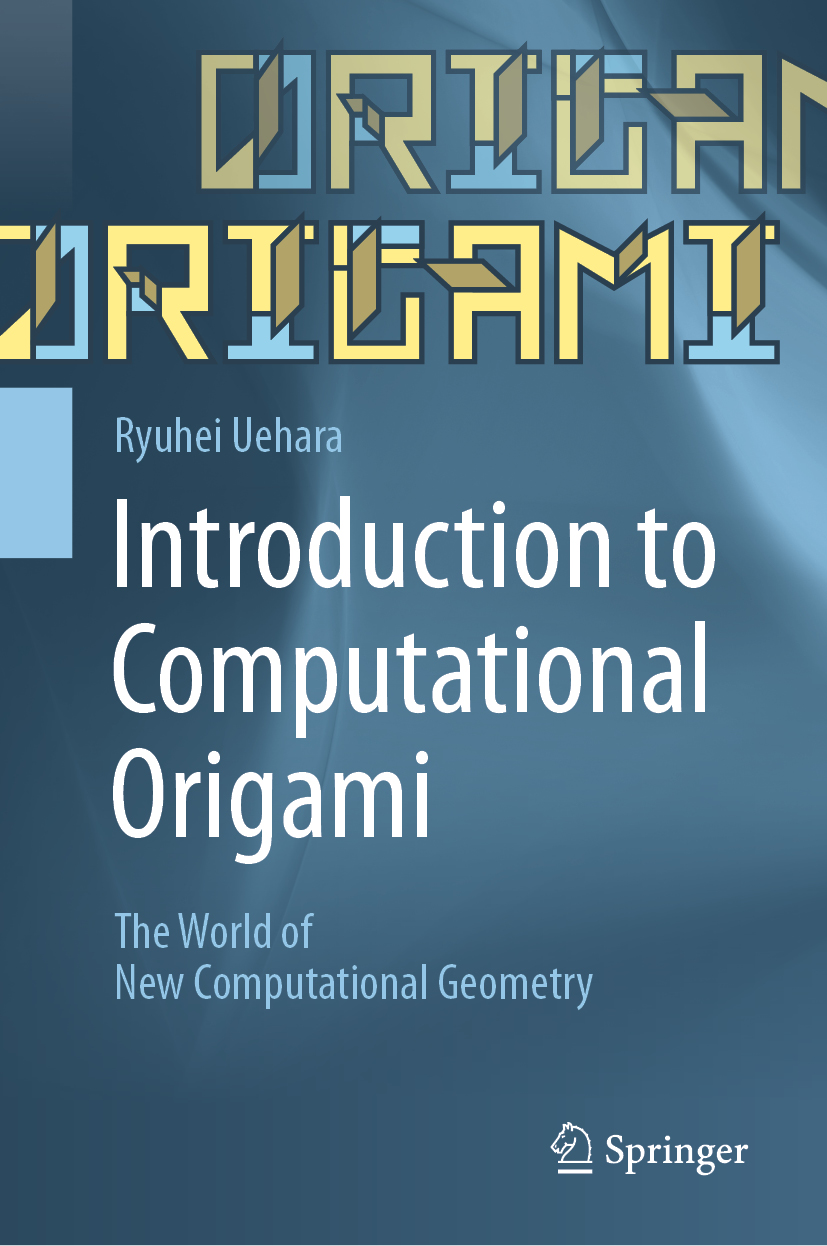Ryuhei Uehara
JAIST, Ishikawa, Japan
ISBN 978-981-15-4469-9 e-ISBN 978-981-15-4470-5
https://doi.org/10.1007/978-981-15-4470-5
Springer Nature Singapore Pte Ltd. 2020
This work is subject to copyright. All rights are reserved by the Publisher, whether the whole or part of the material is concerned, specifically the rights of translation, reprinting, reuse of illustrations, recitation, broadcasting, reproduction on microfilms or in any other physical way, and transmission or information storage and retrieval, electronic adaptation, computer software, or by similar or dissimilar methodology now known or hereafter developed.
The use of general descriptive names, registered names, trademarks, service marks, etc. in this publication does not imply, even in the absence of a specific statement, that such names are exempt from the relevant protective laws and regulations and therefore free for general use.
The publisher, the authors and the editors are safe to assume that the advice and information in this book are believed to be true and accurate at the date of publication. Neither the publisher nor the authors or the editors give a warranty, expressed or implied, with respect to the material contained herein or for any errors or omissions that may have been made. The publisher remains neutral with regard to jurisdictional claims in published maps and institutional affiliations.
This Springer imprint is published by the registered company Springer Nature Singapore Pte Ltd.
The registered company address is: 152 Beach Road, #21-01/04 Gateway East, Singapore 189721, Singapore
Preface
In Japan, origami is often regarded as a kind of childs play. Considered in this way, origami is not mentioned widely in Japan as a part of science. In Japanese, the word ori means folding and gami means paper. That is another reason why the word origami has limited meaning in Japan. Origami is now commonly used in English, and this word has been gaining a broader meaning than the original Japanese word. One can find many variants of origami books, which are wider ranging than Japanese ones, on the shelves of the origami section at bookstores in other parts of the world. The English word origami represents a wider range of paper crafts than in Japan, and it seems that this range is still expanding.
From the industrial point of view, the application of the concept of origami in a broad sense is definitely spreading, however. For example, Miura map folding, invented by Koryo Miura, is a famous origami folding that applied to the foldable structure of the huge solar panels of a space station. Now it is used for more general architecture by extending the folding pattern to more general foldable patterns. There is the Yoshimura pattern which is used for some drink cans and that is useful for reducing the material while maintaining their strength. For stent grafts, which are kinds of artificial blood vessels, those made by shape memory alloys with an origami technique have been developed. In some areas, not noticed immediately, such as research on folding robots, bodies of cars, and DNA folding, investigation of folding is attracting much more attention than previously. Just as the Japanese word origami has become understood in English, childs play has also become science with wide applications.
With the development of these examples of origami science, since 1989 an international conference on origami science, mathematics, and education has been held almost every 4 years. Specifically, it was held in Ferrara, Italy (December 1989), Shiga, Japan (November 1994), Monterey, USA (March 2001), Pasadena, USA (September 2006), Singapore (July 2010), Tokyo, Japan (August 2014), and Oxford, UK (September 2018). Starting with the third conference, they have been referred to as 3OSME, 4OSME, 5OSME, 6OSME, and 7OSME, respectively (OSME stands for Origami in Science, Mathematics, and Education). These conferences focus on the three major topics of science, mathematics, and education. In recent years, origami science has had a strong presence, and it is especially impressive that research using computers has been quite active.
Following this trend, interest in origami in the society of computer science has also emerged. In recent years, occasions to hear the term computational origami have increased. Computational origami is a field of computer science, especially computational geometry. It is an active research area, and many talks on the subject have been given at recent international conferences in computational geometry.
This book is an introduction to computational origami. In the first place, computational origami is a very new research field. In the 1990s, research began on the relationship between a polygon and a polyhedron folded from it, and that research area was named computational origami. Considering that whole problems with folding and unfolding as the basic operations comprise the research subjects, the range of this area is extraordinarily wide and has many applications. By contrast, the population of researchers is still small, so many incomplete fields remain to be investigated. Some researchers say that any research topic will lead to a paper. Based on the current situation, this book aims to facilitate an understanding of the forefront of computational origami. It can be used as a textbook for universities and graduate schools and is devised to be interesting to engineers who are considering the use of origami engineering and to general readers who are interested in the application of computer science.
Prerequisite knowledge is not necessarily required, and in fact, there are many parts that require only elementary mathematics at the high school level. Rather, like relationships between solids and their unfoldings, there are many themes that require recalling what was learned at elementary school. Actually, something like what one learned at elementary school is deeper than might be imagined, and that point, first of all, may be surprising. For example, in the case of unfoldings, sometimes there are currently no solutions other than finding all the cases by using computers finally. However, everyone can understand the solutions themselves for such problems. Such a gap is also one of the interesting points in computational origami. For people who are interested in this kind of puzzle-like unfolding, it may be quite enjoyable to just look at and confirm the results. In any case, the reader will be able to overview the kinds of problems the modern computational origami researchers approach. Students trying to start researching computational origami by themselves can find a suitable theme to begin on. In the field of computational origami, there are many examples in which students (graduate students, undergraduate students, sometimes high school students!) have played an important role in finding solutions. It will be an unexpected pleasure if this book helps encourage the activities of such ambitious students.
This book is largely based on my Japanese book published by Kindai-Kagaku-sha in 2018. Most but not all the contents are from journal papers and conference papers written with my coauthors, including Zachary Abel, Yoshiaki Araki, Brand Ballinger, Therese Biedl, Jean Cardinal, Timothy M. Chan, Erik D. Demaine, Martin L. Demaine, David Eppstein, Jeff Erickson, Adam Hesterberg, Takashi Horiyama, Jinfeng Huang, Shinji Imahori, Hiro Ito, Tsuyoshi Ito, Masashi Kiyomi, Irina Kostitsyna, Stefan Langerman, Anna Lubiw, Jayson Lynch, Hiroaki Matsui, Jun Mitani, Koichi Mizunashi, Yuta Nakane, Paul Nijjar, Gnter Rote, Toshihiro Shirakawa, Jack Snoeyink, Takuya Umesato, Takeaki Uno, Yushi Uno, Toshiki Saitoh, Ming-wei Wang, Dawei Xu, and Tomoo Yokoyama. The origami font on the cover of this book is called

